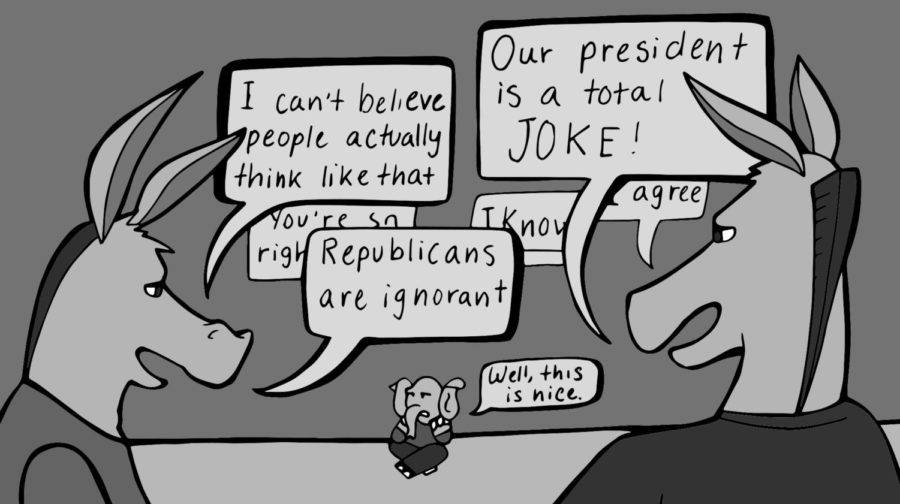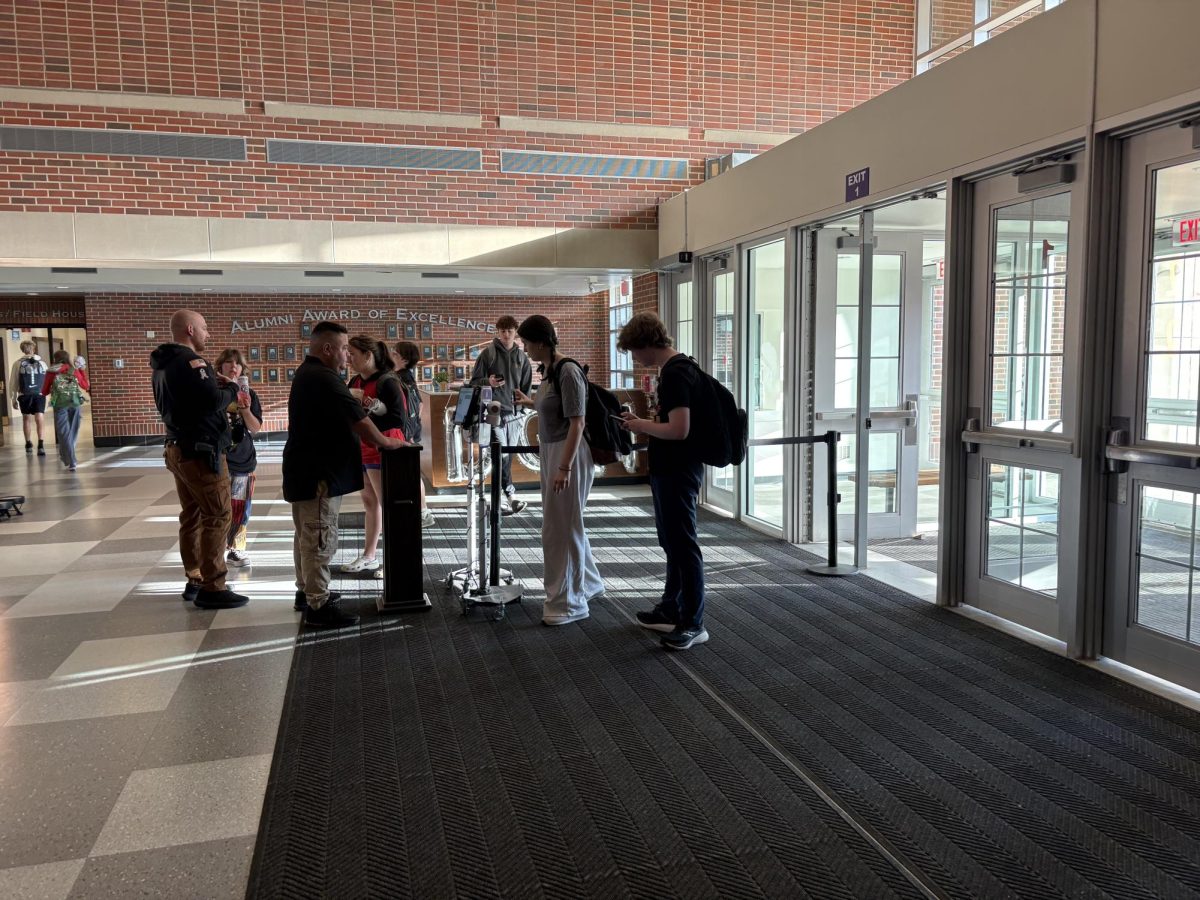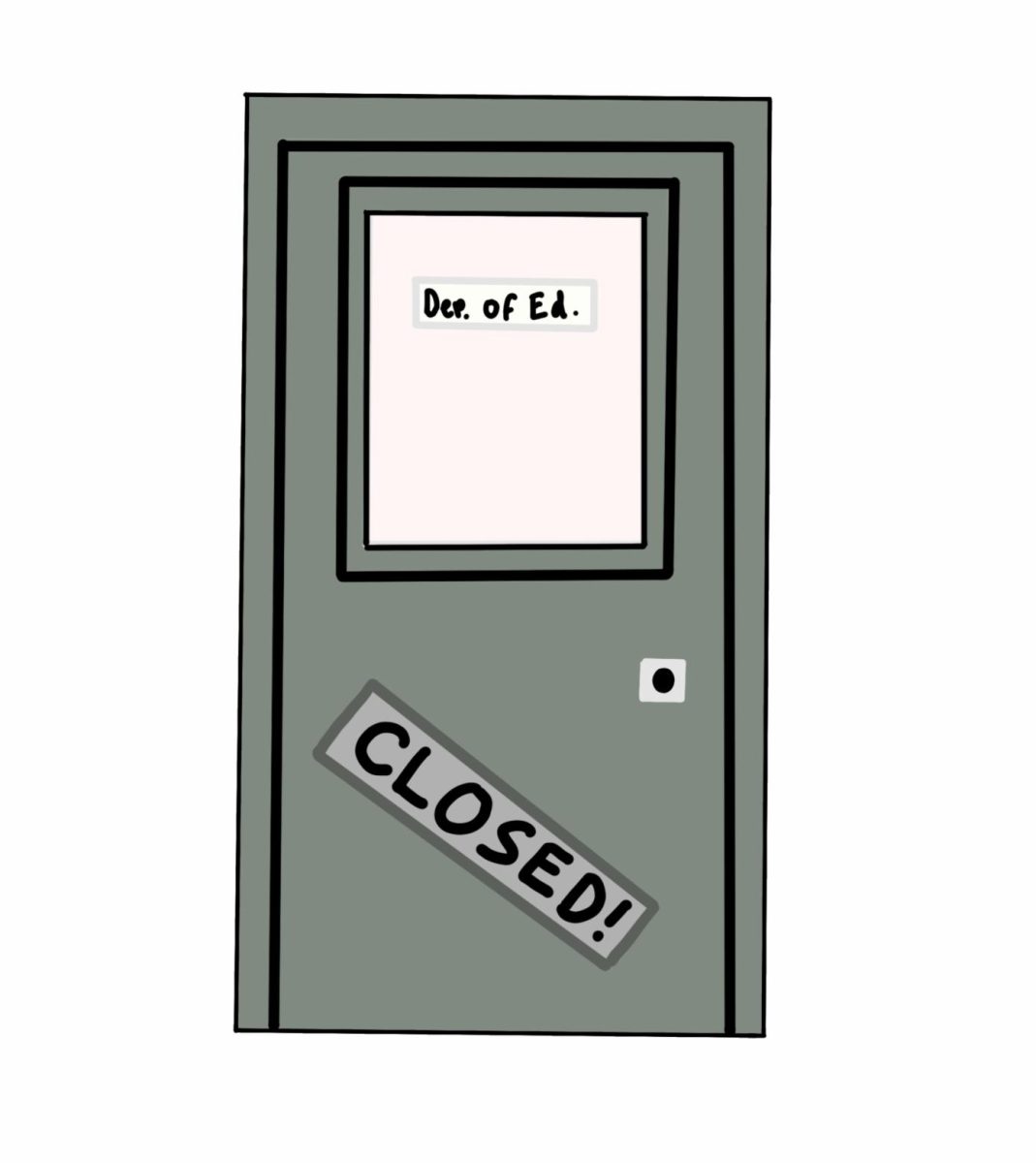Staff Editorial: Balance out different political viewpoints
January 30, 2018
Jan. 24, a plastic rat sat on top of a social studies teachers desk, a photo of Donald Trump with hand-drawn whiskers taped to its face. The rat stayed on the desk, in clear view of the students, for the rest of the period. No comments were made by the teacher, yet the likeness between the rat and the president was clear to everyone in the room. Nobody said anything.
There are students and faculty who support President Donald Trump, while others do not. More often than not, the voices of those on the left-leaning side of the political spectrum are being heard more than those on the right, on issues ranging from the president to health care to science.
Public schools are given a certain degree of autonomy in terms of free speech. However, when teachers let their political opinion known, their affiliations tend to lean left which puts students who have more conservative values in a tough spot.
Free speech needs to work both ways. The disparity between conservative and liberal representation in public schools among teachers and students is not relative to the divisions between them in real life. Students should feel safe to say their opinions in class, regardless of the political affiliations of their teachers.
The willingness to openly share their views in class is based around the presumption that everyone involved is informed and are sharing their views respectfully. It is understandable that the political divisions that happen in real life are similar to the debates that happen in school. Yet, so long as everyone is being civil, all opinions should be able to be shared.
These divisions between conservatism and liberalism in school are just an example of the broader debates over free speech that have been occurring since America’s beginning. As social media has broadcasted various demonstrations and protests worldwide, these debates, along with overall tension, has been heightened.
In order to move forward as a society, there must be communication. Everyone deserves to have the same opportunity to display their opinions, so long as they do it respectfully. From there, conclusions can be drawn about the legitimacy of their argument. If one group is given the chance to speak, so should all.
It is important to remember that by limiting exposure to different opinions, under the grounds that they are different from our own, we are lessening our chances to grow as both individuals and as a society.
This editorial does not reflect the opinions of the entire cub staff.


























